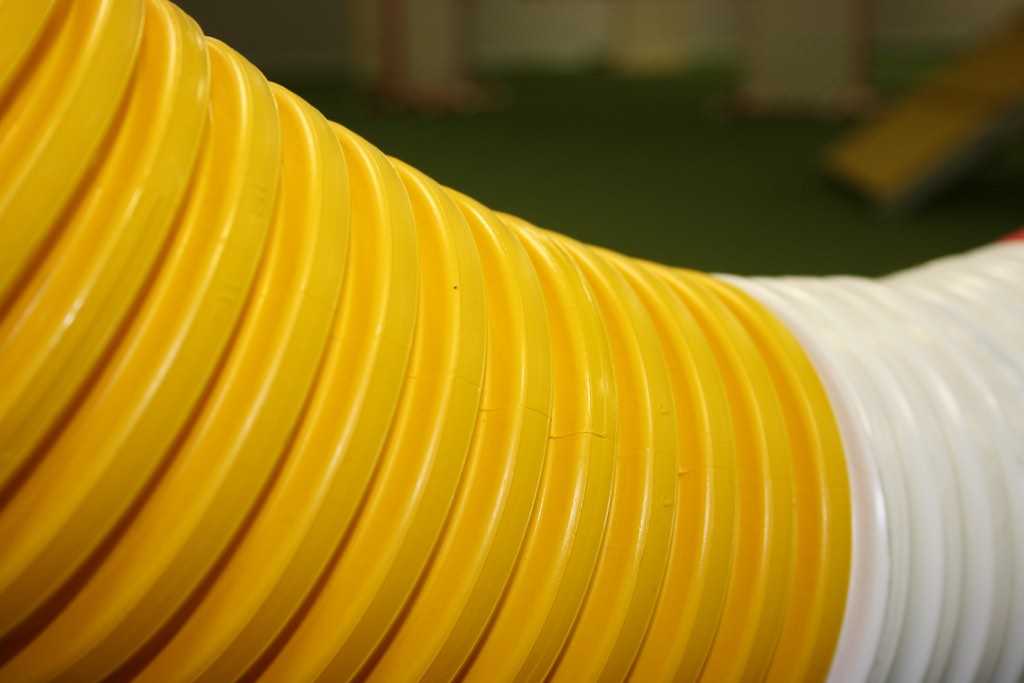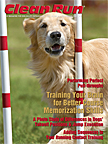Mary Ellen Barry on Threadle Handling
08 Sep 2007
What I like about this article is that Mary Ellen doesn’t just say “I handle the threadle this way”; she explains why her handling system makes this a way she should handle them in order to give her dogs consistent cues.
For those who don’t have a Clean Run subscription (why not?) her method for handling the Threadle is to back up down the “front” face of the jumps. She faces slightly toward the first jump and uses her arm away from the jump (nearest the dog) to direct the dog over the jump and starts backing up toward the second jump. Once the dog clears the first jump she uses her arm nearest the jump (nearest the dog) to draw the dog between the jumps. Then repeat to send the dog over the second jump.
Unfortunately the photos that accompany the article never actually show her using her off side arm being used to direct her dog over the jump. They only show her using her inside arm to cue the second jump
(what I’d consider a Jump Wrap Jump Wrap Handling TipsJump Wrap Handling - With VideoJump Wrap/Wrap) and to draw her dog to her. One photo shows her starting to switch from right to left arm but you don’t see the critical turn and direct with her left arm.
I would summarize the philosophy of her approach as: “since my dog knows he shouldn’t go behind me (her “no-go zone”) if I present my no-go zone when he clears the first jump he knows not to take the second jump from the back side (which would make the sequence a 180) so he knows to come to my front (into her “reinforcement zone”)“. Then she turns her reinforcement zone slightly toward the second jump and sends the dog over the jump with her (now) near side arm. By consistently presenting her reinforcement zone to her dog through the Threadle her dog can see the correct path through the obstacles.
This differs from Linda Mecklenburg’s approach of handling the sequence by moving backwards and using only the arm nearest the dog (not rotating her shoulders toward the second jump and changing arms as Mary Ellen does) (see SingleSidedThreadleHandling). I have been using Linda’s approach for about a year now, since Rachel Sanders first presented that approach at Dana Pike’s Fall 2006 Camp, and I’m pretty comfortable with it. I wonder if the extra slight turn and arm change toward the jump that Mary Ellen uses at the send over the jump complicates the handling? I’d be afraid I might pause for the arm change and with a widely spaced Threadle it might be harder to get to the next jump. I like that I can just use my inside arm through the whole sequence without the arm switch. But that’s just me.
Interestingly, Mary Ellen states:
“In addition, when I am performing successive threadles, I cue the jump differently so the dog knows another threadle is coming.”
I was surprised to read that. To me the cue for the start of the second Threadle should be the same as for the first jump in the sequence. You pull your dog through the gap, turn slightly to the jump and then just give the cue for the jump with near side arm again. I’ll have to ask Mary Ellen about that when I see her at Dana Pike’s Fall Camp in October.
Another great thing about this article is Mary Ellen’s ability to relate Linda’s “plane of her body” concept to Greg’s “Blind Cross Body Line” concept. This is just what I love so much about Mary Ellen; she critically analyzes other handling and training approaches and can compare, contrast, and synthesize her own system from those with whom she trains and studies. That’s why she is one of my favorite trainers.
If you enjoyed this article won't you please:  Thanks!
Thanks!

